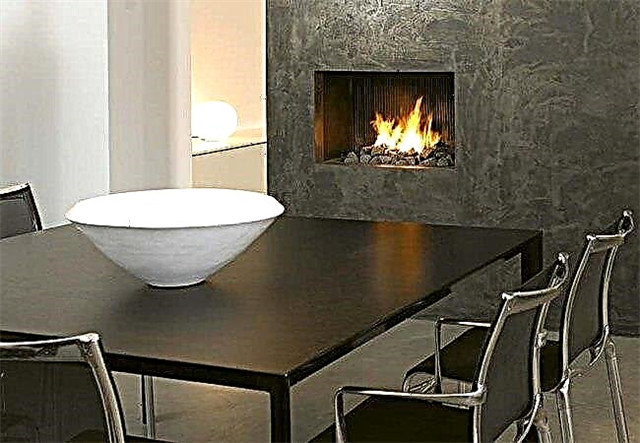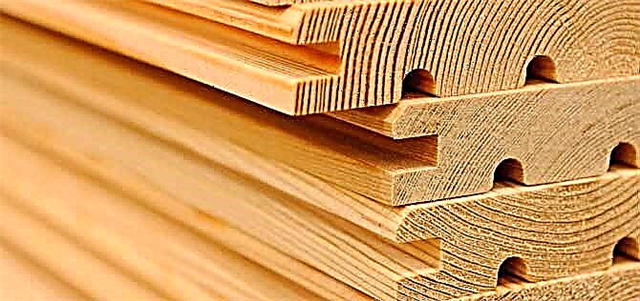
Tile is one of the most popular materials for both internal and external cladding of a house. It has a lot of advantages over other materials, because it allows you to create a unique design, and implement any design ideas.
The tile has earned special popularity due to the fact that it can be used in the repair not only of the kitchen or bathroom, but also of other rooms.

The building materials market offers a huge selection of tiles, but the most interesting, stylish and durable option is diamond tiles or, as it is also called, diamond-shaped. This type of tile is used everywhere, because in a variety of designs it looks in its own way advantageous and unusual.
Basically, designers use diamond-shaped tiles in the design of rooms in classic, retro, Empire and other directions.

Advantages and disadvantages
The reason why this type of finish has become popular is practicality. Ceramic tile for many years retains its original appearance, thanks to the production method, it does not conduct an electric charge, and, therefore, does not attract dust. In aesthetic terms, it is convenient in that it is suitable for most of the most popular styles: the appearance of a tile can convey both luxury and meet all the requirements of minimalism.


Among the disadvantages of this type of cladding, a rather high cost can be noted, if we talk about volumetric options, as well as the complexity of laying.
It will require an experienced specialist who will not damage such an expensive material and correctly install.
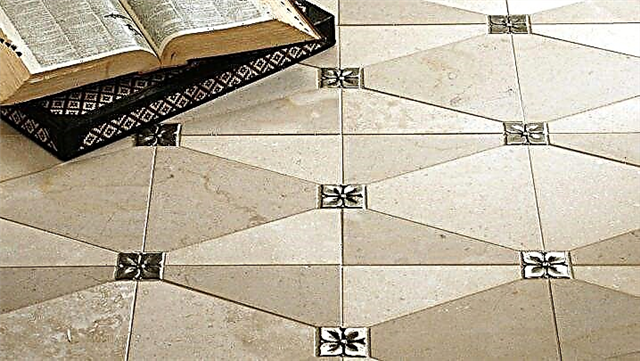
Floor tiles with diamonds are divided into the following types:
- Volumetric product, which is laid in a special way, so that as a result you get a single panel of rhombuses and various decorative elements.
- Plain diamond shaped tile. It is used primarily for cladding floors or various steps.

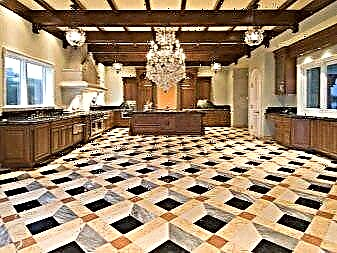
Both types have all the characteristics of ordinary ceramic tiles, which is one of the most beautiful, strong and durable materials. It does not require special care and looks great in any interior.
Ceramic tiles with rhombuses can have a matte or glossy surface.. Particularly noteworthy are collections where the coating imitates the texture of the skin. Similarities with this material allows you to achieve "stitching thread" along the edge, which resembles the finish of a real leather product.
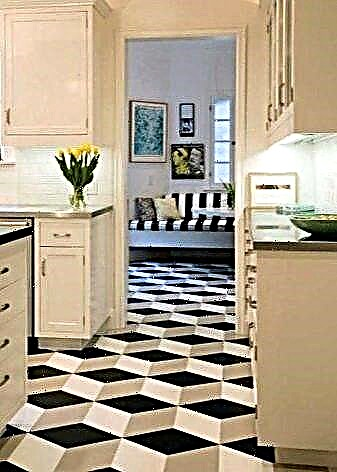

Diamond-shaped
A big sensation in the field of building materials and design art at the time was made by diamond-shaped tiles, which resembles a product made of genuine leather or fabric. Domestic designers often call this type of “carriage”, because the appearance of the finished panel is very similar to the upholstery of the carriage. It is an integral part of the Byzantine style.


The size of the tile can be very different, from small to large, but the most popular are 10 by 20 cm. The color scheme is so diverse that it can easily satisfy the needs of even the most demanding and demanding owners of an apartment or house.
The elegant appearance of the finished coating is achieved through the use of both the tile itself and decorative inserts, whose palette is no less diverse.


Facing with this type is not only suitable for the kitchen or bathroom. Recently, it has been actively used by designers in the design of bedrooms, living rooms, hallways and even cabinets. At the same time, tiles are laid somewhere on the entire floor, and in some interiors only part of the room is decorated.
Often, diamond-shaped tiles decorate not only the floor, but also the walls of the room. For example, the head of the bed looks beautiful, decorated with tiles with a matte or “leather” coating. No less chic looks tile with rhombuses when decorating a fireplace in the living room.
Square
A square tile that is simply laid with diamonds is a classic option. It has been used for interior decoration for decades and does not lose its relevance.
Such a tile fully retains its operational characteristics, but at the same time loses volume and loses in appearance originality, although in some interiors it is more relevant. More often than other options used for flooring in any room. An interesting solution is a panel in black and white, which is applicable in all rooms of an apartment or house, since it visually expands the space, creates a pleasant atmosphere and adds some originality.
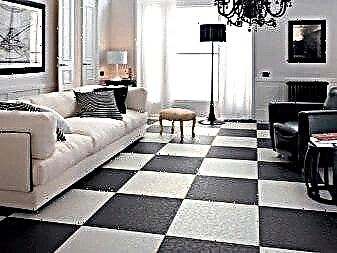

Mosaic
There are many options for using diamonds in the interior. This also applies to ceramic tiles, which allows you to create a mosaic of small details. This process is technically more complex, so it requires the hands of a true master, but the aesthetics are amazing. As a result, there is a finish with various patterns that give visual effects.
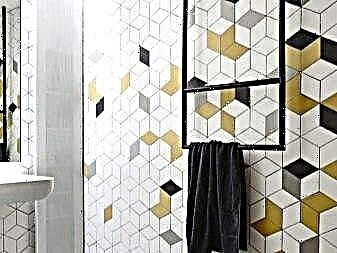

In the mosaic, additional inserts are also applicable, not only from ceramics, but also from other equally beautiful and durable materials, in particular, wood, glass, stone and metal. The mosaic made of a seamless tile in the form of small rhombuses looks especially beautiful. It looks like a single canvas, while meeting all the characteristics of ceramic tiles and visually does not even give a hint that the canvas was made from different parts.
Stacking
When buying, it is better to choose the so-called commercial type of diamond-shaped tile. It is durable and has enhanced moisture protection. Quick-drying cement glue is ideal for such a coating, but you can choose another, more suitable option.
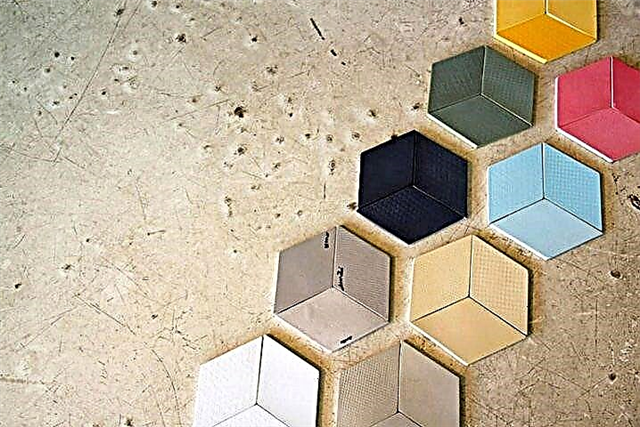
First you need to carefully prepare the floor surface. For this:
- Remove the old coating.
- Vacuum the base, remove greasy and oily stains.
- Wipe the surface with a damp cloth.
- Use the level to determine the highest point on the floor.
- Install waterproofing film.
- Make a screed.
- Apply a liquid acrylic mixture to the surface using a soft roller.
- Wait for the mixture to dry and solidify.


Now try to correctly place the tile with a diamond on the floor in the bathroom, following the following recommendations:
- Lay out all the tiles on the surface starting from the pipes.
- Make the missing pieces of the cut-off cladding.
- Trim the tiles beneath the pipe with a diamond cutter using the wet method.
- Lay the tile under the pipe, leaving a margin of 1.5 cm.
- Dilute the adhesive mixture according to the instructions.
- Apply the adhesive mass to the floor area under 2 tiles.
- Wipe the underside of the tile with a damp cloth.
- Using a comb, apply a thin layer of glue to the back of the tile.


- Lay out the first row of tiles near the pipe, wedging it with a cross.
- Press lightly on top of the tile, pressing it to the floor.
- Tap the tile with a soft rubber mallet.
- Remove excess glue.
- Repeat operations with other rows, regularly checking the floor level.
- Fit the tile of the last row in size and lay it.
- Wait for the glue to dry and grout.

Designer's recommendations:
- Do not use rhombuses in combination with other shapes. It is important to understand that they are an independent and fairly active element that partially fills the space and attracts a lot of attention.
- Mosaic, especially bright colors, goes well with calm and inconspicuous design elements that will become just a backdrop for such a beautiful and unusual panel.
- No need to be afraid of glossy coatings, the main thing is to use them in an acceptable amount, but matte surfaces are much easier to apply. They do not look elaborate, calm and stylish.


Ceramic tile with a rhombus is a great alternative to familiar materials. He will bring a new life into the familiar interior, will provide an opportunity to realize the cherished design ideas.
The room will be filled with new colors and will delight owners for many years.

See how to properly lay out and lay out the tile diagonally in the next video.
Tile rhombus and fashion trends
Today, the design world is literally overwhelmed with love for diamond-shaped tiles, which can be:
- wall and floor
- flat and convex,
- plain and decorated with ornate ornaments,
- imitate fabric or leather, metal or stone.
But at the same time, regardless of the type, tiles of this form always look elegant and non-standard. It is versatile and looks equally good on a kitchen apron and in the dining area, in the bathroom and on the landing. And, most importantly, it fits perfectly into interiors made in a variety of styles.
3D hails from Pompeii
It turns out that the 3D phenomenon was born back in the 2nd century BC, in the glorious ancient Roman city of Pompeii. It was here that during the excavations, archaeologists had an amazing picture: three-colored paving slabs in the form of rhombuses, laid in such a way as to obtain the effect of three-dimensionality.
I must admit that such a styling has never gone out of fashion, being one of the symbols of the antique style. And now, designers offer to use it not only in floor coverings, but also to decorate the walls with diamonds in the bathroom, in the kitchen and even in the living room. Moreover, for the embodiment of the antique style in the interior, you should choose a natural beige-brown gamut and a decorative material that imitates marble. And for rooms in the spirit of minimalism - buy black and white monocolor tiles with rhombuses.
Ceramic carriage coupler
Another designer find that clearly claims to be a masterpiece is a capitone or a carriage screed. Until recently, it could be seen only in the upholstery of upholstered furniture and occasionally decorating the walls of boudoirs. And now the tile with rhombuses with round inserts allows even the bathroom to be decorated in an elegant Victorian style.
It should be noted that the carriage screed always visually reduces the space. Therefore, for a small bathroom, it is worth choosing convex rhombuses of white or milky color. If, on the contrary, the goal is to make the spacious room more comfortable, pay attention to the cappuccino or milk chocolate bar.
Rhombus tile in the kitchen
Looking at photos from the latest international exhibitions of ceramic tiles, it is impossible not to pay attention to collections including rhombuses with ornaments. They are intended mainly for the kitchen, and allow you to embody the current patchwork style or patchwork. Thus, it is obvious: a tile with rhombuses is a material surprisingly grateful, and ready to respond to any requests from a designer.
Styling technology
Laying tiles with a rhombus is not the easiest way, but it allows you to hide all the shortcomings of the geometry of space. The diamond-shaped laying of the flooring in the kitchen eliminates the situation when the facades of the kitchen furniture do not coincide with the tile seams, which is possible if the calculation is incorrect, why the floor may look messy, and the general aesthetics of the kitchen is often violated.

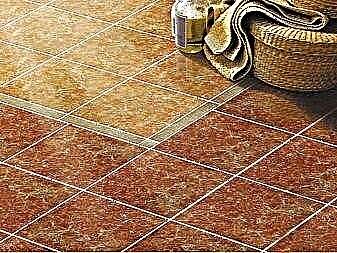
There are two methods for laying this decoration material with a diamond.
From the center of the room
This method is used if the center of the room is free in the future during operation. Laying is done by the sector method, the center is determined by laying auxiliary lines from each of the four corners of the room. In the place where the lines intersect, there will be a center, there you need to lay the first tile, the lines themselves form visually four triangular segments. Tiles must be laid sequentially in each segment diagonally.


From the corner
Work begins with laying solid tiles in the corner of the room. First, all whole elements are laid, after - cut diagonally in the form of an isosceles triangle. Typically, tiles begin to be laid along a long wall from a corner farthest from the window.
Which option is more suitable for a particular room will help the tiler specialist decide. If you want to work independently, it is important to understand that when laying from the center, errors in calculations will be much more noticeable than when laying from the corner.

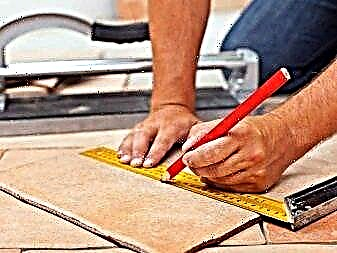
Materials and Tools
Before starting laying the floor cladding with a rhombus, you need to prepare the necessary tools and materials.
From the materials you need:
- tiles of the same size from one manufacturer, bought from one batch (it is worth taking material with a margin), or a companion (for example, white with black),
- special glue for ceramics,
- suture crosses for evenly securing the distance between the elements,
- grout for joints (to eliminate blackness at the joints),
- primer.

Of the tools you will need the following:
- tile cutter (the main tool, without which it is impossible to correctly and beautifully lay the tile with a rhombus),
- paper tape for cutting elements,
- building levels of 500 and 50 cm (for aligning diamond-shaped lines),
- containers for diluting glue and grout,
- the cord with which the first line of the tile is laid,
- construction pencil for marking,
- spatulas with various parameters (metal and rubberized), with which glue and grout are transferred to the tile,
- a hammer with a rubber striker to knock out elements for even laying,
- building metal roulette,
- drill with a nozzle "mixer" for mixing glue,
- sponge in the form of an iron grater, necessary to start the grouting process,
- rag and water (to remove adhesive residue from the front of the tile).


How to calculate the quantity?
Diamond-shaped flooring implies a greater consumption of tiles than simple laying. Elements laid around the perimeter of the room will be cut in half, all of them will go to the gathering, about 15% of the purchased material should be taken into account for waste.
This factor is important to consider in advance, since even in large stores the tile of one batch is disassembled instantly, you can buy the exact same only through the supplier, which will take longer to order and delivery.
To correctly calculate the necessary material, you need a drawing of the location of the future installation. It can be drawn independently or ordered from a specialist. At the stage of buying material, it is possible to get advice from sellers. Almost always, manufacturers provide large retail chains that sell their goods with special software for creating 3D sketches.

In addition to the tile itself, it is important to consider that consumption will increase due to the mandatory presence of a distance between the tiles.
The width of the seam does not depend on how you lay the tiles, a single standard is set:
- ceramic tiles measuring 30 x 30 cm - 1–1.5 mm,
- tiles ranging in size from 30 x 30 to 60 x 60 cm - 2–5 mm,
- tiles larger than 60 x 60 cm - 5-10 mm.
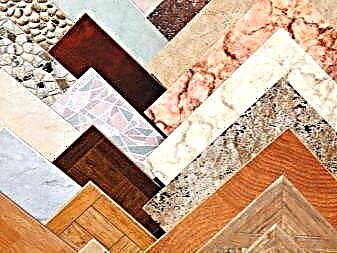
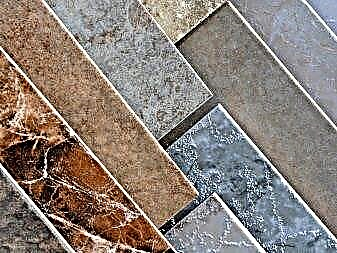
Mounting
Laying with the rhombus method is the same as with other cladding technologies:
- tile adhesive is applied to the floor itself and the rear surface of the tile,
- elements must be laid strictly in accordance with the markup created,
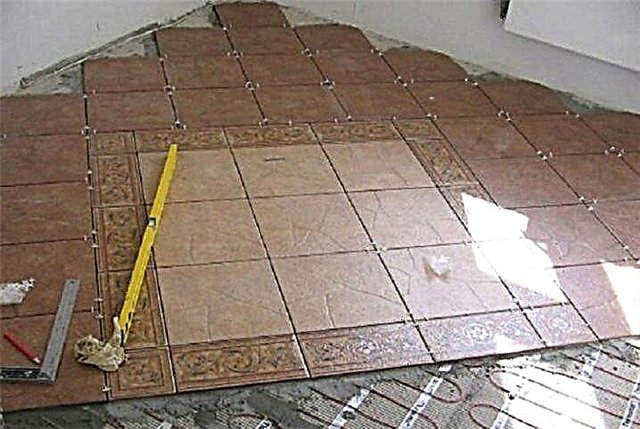
- the fragments are slightly pressed into the floor on which the glue is applied, the entire surface is tapped with a rubber hammer until excess glue protrudes along the edges,
- put the next element, at the building level they monitor so that both tiles are at the same height from the floor plane.

When laying from the center, work begins with whole elements, while the trimmed triangular tile must be laid in two days, when the main part reaches the desired strength. When laying from a corner, the technology is similar.
It is impossible to lay a tile with a rhombus at a time, otherwise inaccuracy of laying cannot be avoided, such a floor will begin to “walk”. The markup should be taken with all seriousness, the final result will depend on it.

Particular attention is paid to the first row of cladding, for its evenness over the surface, pull a cord or use a laser pointer. There is no need to spread glue over the entire surface of the floor, it is enough to make cross marks for its application. The first fragment is always placed in a rhombus so that its corners are directed to the walls. Gradually, in the sequence outlined according to the plan, the remaining elements are laid, the trimmed ones are placed at the very end.
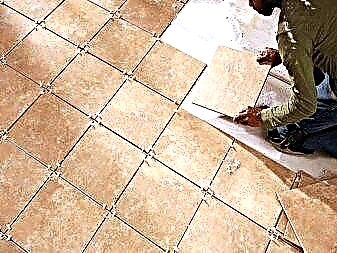

Conclusion
Laying tiles with a rhombus ensures originality of the floor covering, allows you to adjust some flaws in the floor and walls (for example, when the walls of the room are not strictly perpendicular to each other). In a simple way, it will be striking when, by the end of the work, you have to cut the tile near the wall by more than half, while at the beginning of the work it was not cut at all. Using a diamond-shaped styling, this room defect is less noticeable visually. The rhombus-shaped floor cladding allows you to create unusual ornaments in the central part of the room. You can choose a different texture of the tile, a different color, pattern or even the size of the facing material, and the flooring will sparkle in a completely new way, making the interior more interesting.
On how to properly lay the floor tiles diagonally, see the following video.

